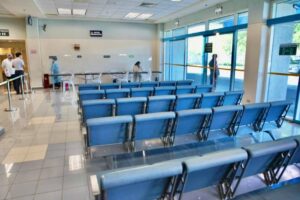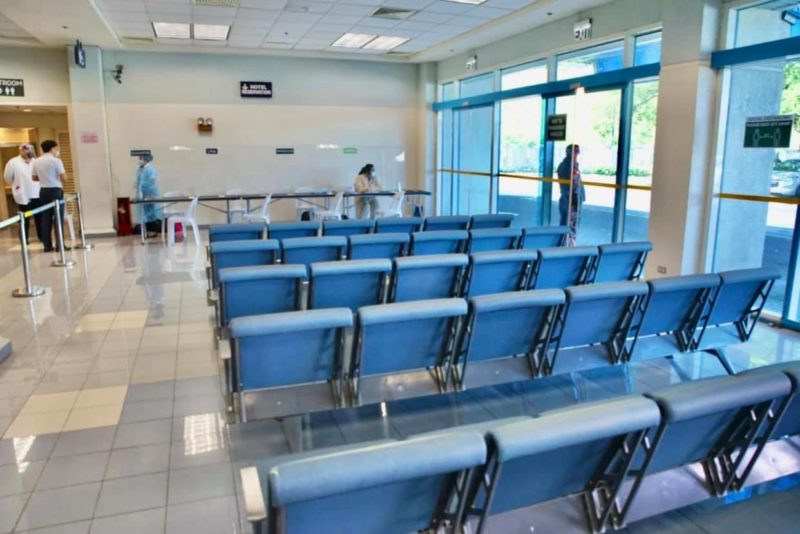
Passenger terminal at Capinpin Port in Bataan | Photo from DOTr
Implementation of the reduced physical distancing requirement among riders of public transportation has been suspended pending approval by Malacañang, presidential spokesperson Harry Roque, Jr. has announced.
In a press briefing on September 17, Roque said this decision was made at a meeting of the Inter-Agency Task Force for the Management of Emerging Infectious Diseases (IATF) held on the same day. The suspension was in response to opposition from medical groups, the Department of Health (DOH), and the Department of the Interior and Local Government (DILG).
In news reports, both chiefs of DOH and DILG argued against the reduction of physical distancing in public transportation, citing the recommendation of the World Health Organization (WHO) to maintain at least a one-meter distance.
Roque said President Rodrigo Duterte is yet to study the policy and will make his decision after the IATF submits its report.
Agencies of the Department of Transportation (DOTr) on September 14 started implementing a policy to reduce physical distancing among riders of public transport in air, maritime, and land to increase ridership capacity. This was after the IATF, in Resolution No. 69-A, adopted the recommendation of DOTr and the Economic Development Cluster (EDC) to reduce passenger social distance to a safe minimum with face shields and face masks in place.
READ: Commuter distancing rules in public transport eased
DOTr earlier explained that strict health protocols like the mandatory use among commuters of face masks and face shields are now being enforced to contain the spread of the coronavirus (COVID-19). As such, the one-meter physical distancing measure can be safely adjusted to an initial 0.75 meter, then to 0.5 meter, and then later to 0.3 meter to increase ridership, DOTr said.
Former health secretary Dr. Manuel Dayrit, who led a panel of medical experts that submitted to IATF the recommendation to reduce physical distance, said that while the WHO makes certain norms and standards, countries have to deal with the situation according to their own contexts.
Dayrit said evidence shows that physical distance can be maintained below one meter as long as other health measures are implemented.
For his part, Transportation Secretary Arthur Tugade earlier said: “There is a need to safely optimize the carrying capacity of the various public transport modes as Metro Manila and its adjacent areas continue with the transition towards the ‘new normal’ where more workers are expected to return to their re-opened work places and more businesses are expected to resume operations that were stopped during the enforcement of strict quarantine measures.”
The EDC has also expressed support for a reduction in physical distance among commuters in public utility vehicles to a minimum, provided they observe strict health and safety measures.
Aside from mandatory face masks and face shields, passengers must also refrain from talking or making phone calls while onboard public transport.





